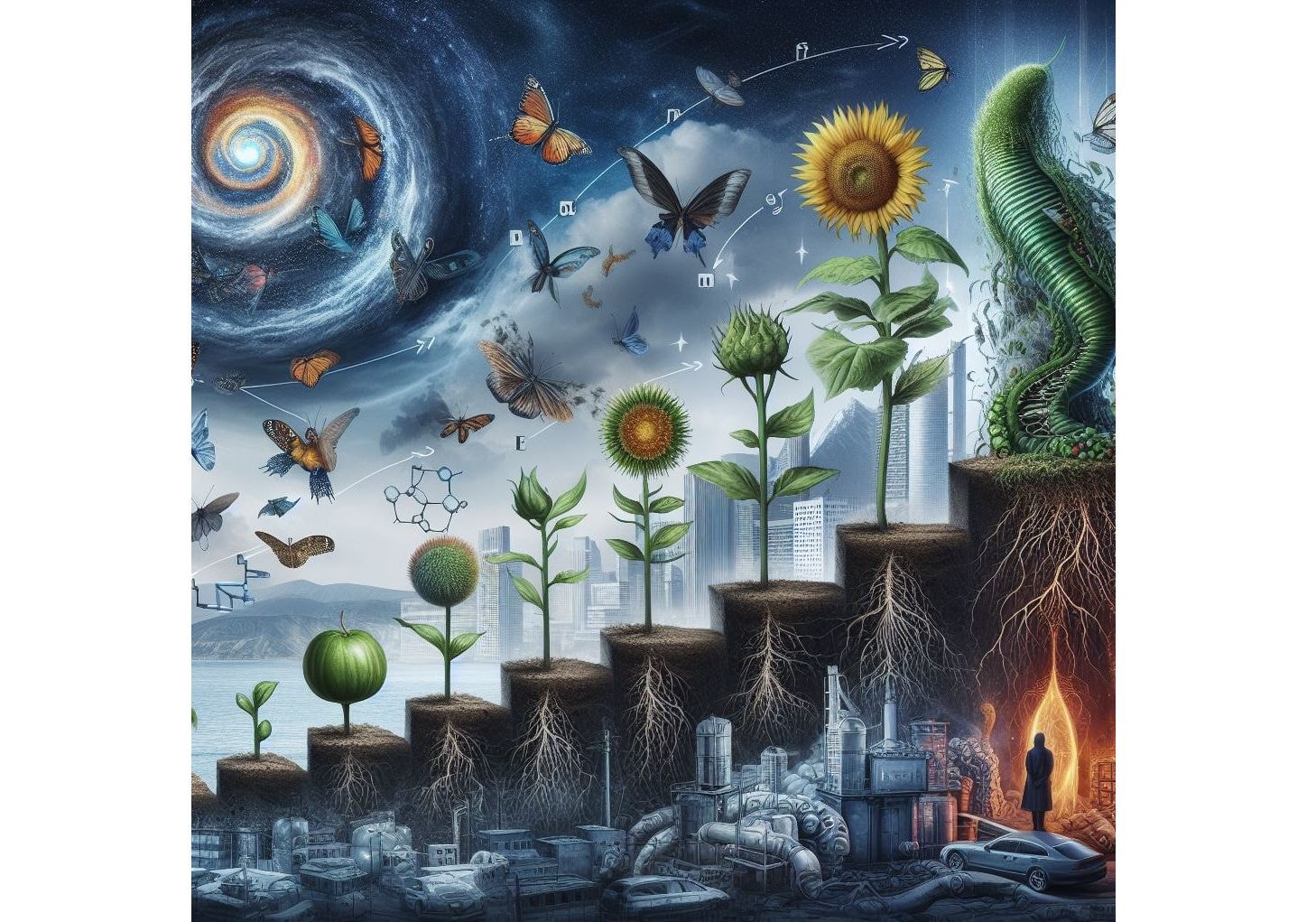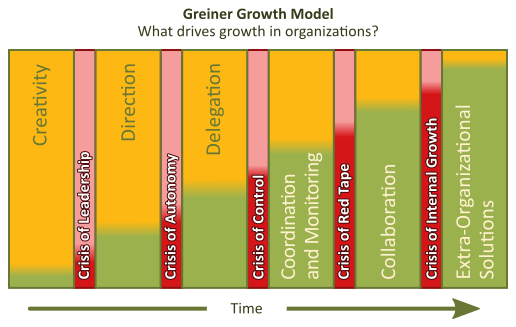
Growth driven change in organizations
How do organizations grow?
Crabs grow a hard shell for protection. While the crab grows, its shell remains the same preventing further growth after a while. The crab needs to molt leaving behind a softened shell while the new shell takes shape underneath.
Organizations grow likewise. Expansive growth hits limits from time to time and the organization needs to change. The process is like molting. Old habits, rigid ways of daily operation need to soften and leave space for new ones. Characteristics useful before but preventing growth and development must go. The organization develops a new shell while old structure and habits melt and left behind.
Size and sophistication
We identify growth with size. When an organization grows, numbers describing its aspects increase. Growth means more members, larger revenue, or more assets under the organization’s command.
But growth also means increasing complexity. With more members, an organization has more communication lines. It also has a more diverse talent pool and more complex decision making. While members shake hands every day in startups, some members of large organizations may never see each other. Three friends may pronounce the strategy of a startup in a café, while a large company may devote a few dozen pages and several months to strategy formulation. Larger sizes need more sophistication.
Growth leads to change
Growth not only means more of the same. It makes change necessary even when the environment is stable and there are no threats or opportunities on the horizon. As the organization grows, solutions working today will become obstacles like the shell of a crab. The further we get from the optimal size for our current modus operandi, the harder further progress will be. Growth slows. Growth stops. Extensive growth without structural changes leads to a crisis until the organization finds new ways to grow further.
Larry E. Greiner describes six stages divided by five crises in organizational growth.

While organizations do not grow then, crises are more important than growth periods. Qualitative changes occur in times of crisis, making further growth possible.
Crisis of leadership
The fuel of startups is creativity. Whether you start a business or a nonprofit for a cause, finding your path is a daily struggle. The few members of your organization can communicate directly; decision making is an informal process. Founders use enthusiasm as their source of motivation.
But, as new members join the organization, coordination becomes more difficult. Informal, consensus based decision making does not work any longer. You need to find leaders who can take responsibility and convince others. You need professional management.
Crisis of autonomy
Operations become more formal. Structures form, processes take shape. The organization can grow further, producing more or taking up a wider range of activities. But leaders reach the limits of their capacities and get overwhelmed. The solution is giving more autonomy to members. Instead of giving detailed direction, managers delegate responsibility and authority.
Crisis of control
Delegation frees up leadership capacity and the organization can react faster to opportunities and challenges. Further growth and increasing autonomy of units, however, requires new capabilities to coordinate activities. The organization needs a head office with professional staff to improve coordination of units and activities.
Crises of red tape
With better coordination, the organization can continue to grow. Coordination, however, leads to more formalization and bureaucracy. To get the focus back to production and core activities, red tape should be replaced with greater flexibility.
Crisis of internal growth
Formal control gives way to more sophisticated information systems and structures enabling flexible and responsive decision making. Matrix structure, project teams, and new incentive systems emerge. Further growth may continue until the organization can rely on its internal resources. When these options are exhausted, the organization needs to develop capabilities to rely on external solutions. Strategic partnerships, outsourcing, or mergers are possible solutions.
Transformation: the key for growth
The key lesson of Greiner’s model is that growth and organizational change are linked. If you want to grow, you must embrace change. Transformation is the key for growth and development. As organizations grow, they gain new capabilities but lose advantages of smaller organizations. Specialization, increasing operational efficiency, and economies of scale replace quick informal decision making. Machine-like bureaucracies, in return, give way to self-organizing teams supported by sophisticated information systems and networks of pooled resources.
Transformation is doing things differently. New structures, new processes, new strategies all need learning and change on different levels. Ultimately, the key to continuous growth and development is not doing more of the same but being able to change.
Get your free book now!
Start meditation now. The simple method I describe in my book works for everyone.
(c) Copiright 2020-2023 | Privacy Policy
Created with © systeme.io

